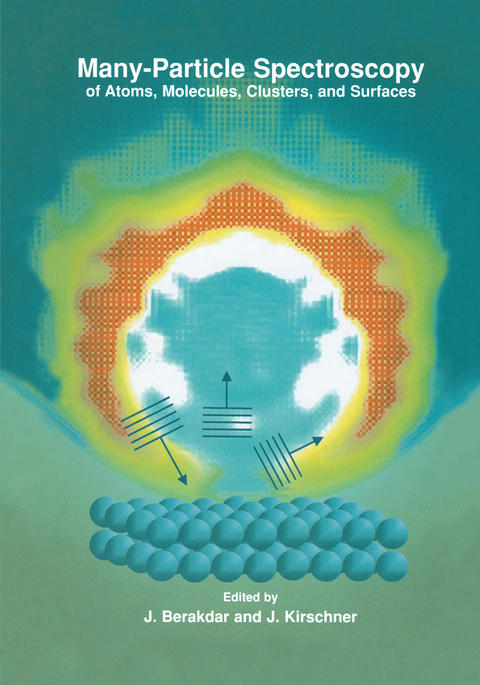
Many-Particle Spectroscopy of Atoms, Molecules, Clusters, and Surfaces
Kluwer Academic/Plenum Publishers (Verlag)
978-0-306-46588-8 (ISBN)
1. Experimental study of interferences in non-coplanar (e,2e) cross sections.- 2. Ionization of laser oriented sodium atoms by polarized electrons.- 3. Time-dependent calculation of electron-hydrogen single differential ionization cross sections using pseudostates.- 4. (e,2e) processes on isoelectronic hydrogen- and alkali-like ions: Scaling laws.- 5. Asymptotics of the helium bound states.- 6. An application of the Coulomb scattering theory to ionization processes.- 7. Exact versus local exchange in distorted-wave Born calculations of electron impact ionisation.- 8. On the influence of using Dirac-Fock rather than density functional Potentials in the relativistic DWBA approximation.- 9. Effective potential study of (e,2e) processes with polarized electrons.- 10. Low energy (e,2e) ionization of argon in the equal energy sharing geometry.- 11. Low energy inner-valence electron impact ionization of argon.- 12. Electron-electron coincidence studies in Xenon with precisely tailored equipment.- 13. Influence of post collision interaction on the line-shape of auger-electron spectra in electron impact ionisation.- 14. Direct observations of satellite and inner-valence states of Xe2+.- 15. Spin-Flip transitions for the resonantly excited Xe*(6p3/2)N5O2,3O2,3 Auger spectrum.- 16. Multiple scattering processes in ion atom single ionisation.- 17. Rescattering of an atomic electron in a time-dependent field.- 18. Recent progress in theory of atomic double photoionization.- 19. The double ionisation of helium by both photon and electron impact.- 20. Is the optical limit approached in coplanar (e,3e) experiments on He at high and intermediate energies?.- 21. The role of the momentan transfer in (e,3e) collisions on helium.- 22. Electron-impact double ionization to investigate electron correlation.- 23. (e,3e) as a two-step process.- 24. (e,3e) processes: A brief theoretical review and new ideas.- 25. On the importance of the second order term for double excitation processes of helium by charged particles.- 26. (PS, E+E-).- 27. Differential measurements of single and multiple ionisation of argon by positron impact.- 28. A multi-technique investigation of doubly-excited states of N2.- 29. Fragment ion-photon coincidence (FIPCO) study of dissociative ionization accompanying light emission by electron impact on hydrocarbon molecules.- 30. An electron momentan spectroscopy study on molecules having two equivalent functional groups.- 31. Study of multicapture cross sections using multicoincidence technique in Xe30+ on C60 collisions.- 32. On the role of screening in metallic clusters.- 33. Assorted remarks on density functional theory.- 34. (e,2e) studies of Condensed matter: A review of recent results.- 35. Theory of electron- and photon-induced two-electron emission from surfaces.- 36. (e,2e) spectroscopy of high-Tc cuprate oxides.- 37. Double-electron photoemission from surfaces.- 38. The electronic structure of Ag/Cu(100) and Pd/Cu(100) surface alloys studied by Auger-photoelectron coincidence spectroscopy.- 39. The effect of confinement in double photoemission.- 40. Semiclassical study of the rydberg atoms near a metal surface.
| Erscheint lt. Verlag | 31.7.2001 |
|---|---|
| Zusatzinfo | X, 518 p. |
| Verlagsort | New York |
| Sprache | englisch |
| Maße | 178 x 254 mm |
| Themenwelt | Naturwissenschaften ► Physik / Astronomie ► Atom- / Kern- / Molekularphysik |
| Naturwissenschaften ► Physik / Astronomie ► Optik | |
| ISBN-10 | 0-306-46588-4 / 0306465884 |
| ISBN-13 | 978-0-306-46588-8 / 9780306465888 |
| Zustand | Neuware |
| Informationen gemäß Produktsicherheitsverordnung (GPSR) | |
| Haben Sie eine Frage zum Produkt? |
aus dem Bereich


